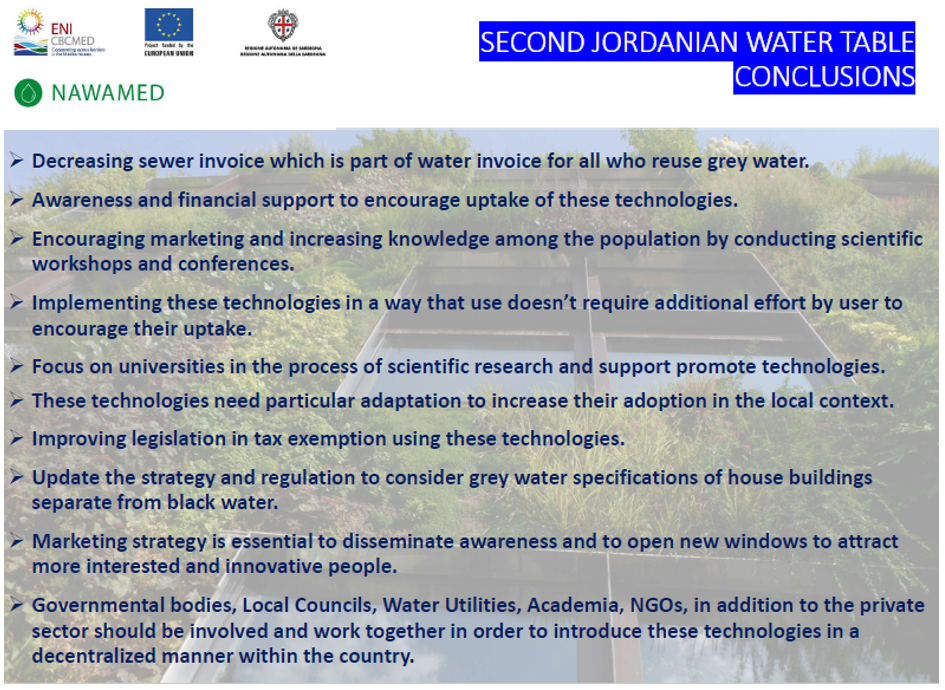NAWAMED: stakeholders’ debate on how to increase the adoption of non-conventional water practices in Jordan
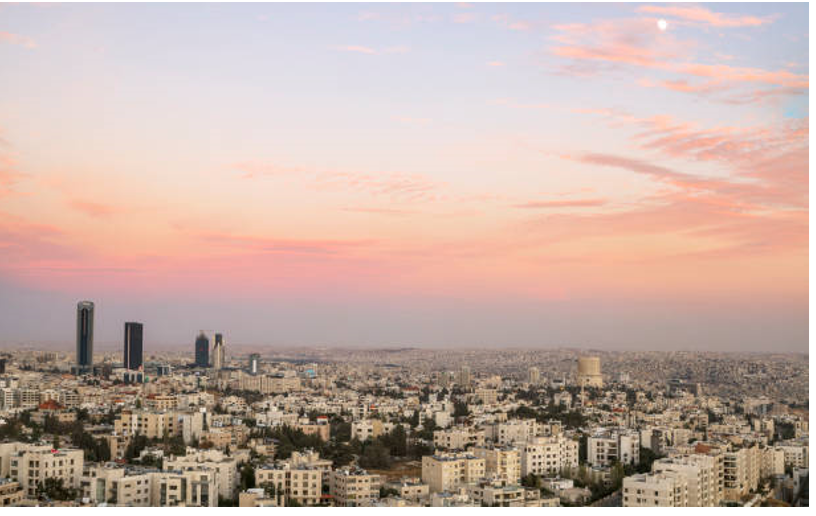
During the second NAWAMED Water Table, a national meeting organized by the University of Jordan (UJ), on June 30th, 2021, stakeholders investigated and debated about current and emerging technologies in the fields of Water Demand Management (WDM) and Non-Conventional Water Resources (NCWR).
Barbara Sarnari, vice-president of Euro Mediterranean Center for the Sustainable Development – SVI.MED., partner of NAWAMED, started by presenting NAWAMED objectives and expected achievements. Furthermore, she clarified multiple challenges that face Nature Based Solutions (NBS) related projects.
There is not considerable knowledge regarding designing, implementing and maintaining NBS. The lack of deep understanding among key actors, deficiency of skills and experience, the lack of knowhow and ready to use technologies and ready to apply scientific results, make the adoption of NBS even more challenging
She closed the presentation listing the current existing technologies for greywater treatment and reuse, such as chemical technologies, physical technologies, physico-chemical systems, electrochemical reactor and biological (aerobic / anaerobic) systems.

Prof. Ahmed Al-Salaymeh (NAWAMED project coordinator at UJ), focused and clarified the advantages of NBSs. Such benefits include, further than the possibility to treat a large quantity of greywater: provision of air filtration, oxygen production and CO2 storage, reduction of energy related costs from building insulation and positive microclimate effects, improvement of biodiversity and aesthetic, reduction of noise pollution and enhancement of building longevity.
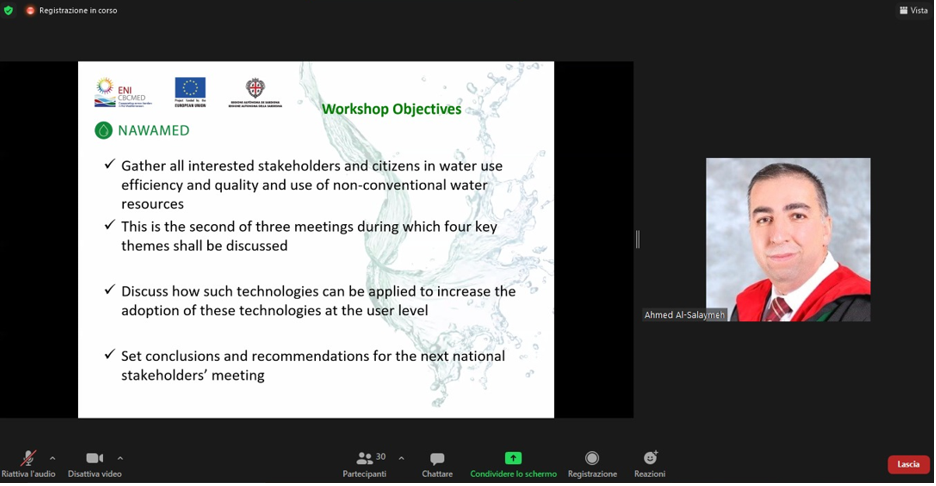
Many key stakeholders contributed in the debate in order to increase the uptake of these technologies by individual private buildings and commercial enterprises, particularly in the case of greywater treatment and reuse technologies.
Eng. Ahmad Al-Braizat, operation manager from the commercial sector (Arab Towers Contracting Co -ATCCO) with wide experience in grey water treatment technologies, recommended:
For residential complexes, hotels, schools, hospitals and mosques, it is better to use treatment plants with mechanical systems and biological treatment in addition to physical and chemical treatment to produce high quality treated water to allow it to be used for cleaning yards, flushing of toilet and irrigating green spaces.
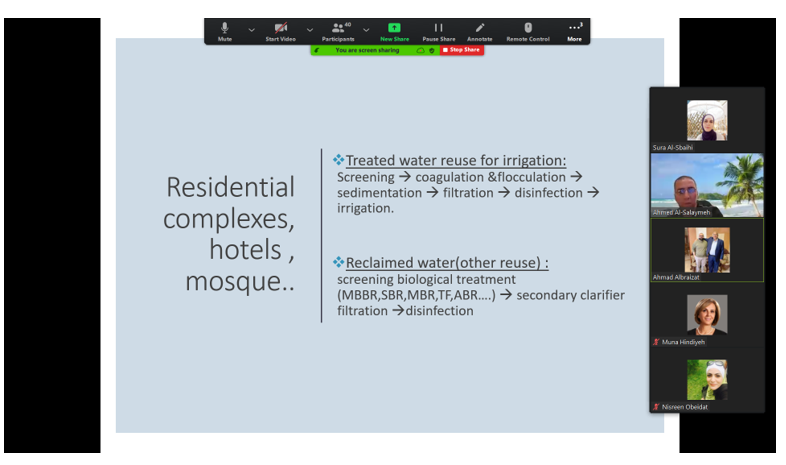
Furthermore, Eng. Al-Braizat explained that for small homes it is appropriate to design treatment plants with a smooth flow by gravity without mechanical equipment such as constructed wet land and anaerobic stabilization ponds, because:
It is not feasible to use any mechanical systems in the grey water treatment plants designed for them because they cannot afford operation and maintenance costs
On the other hand, Eng. Fares Wakileh, whose company (Wakileh Contracting) provides integrated and innovative solutions in grey water treatment and deals with various products such as wastewater treatment plants and equipment, stated:
The greywater unit is designed to operate automatically with minor interference from the owner. All electromechanical equipment are simple pumps which can be easily operated, maintained and repaired by a local maintenance person
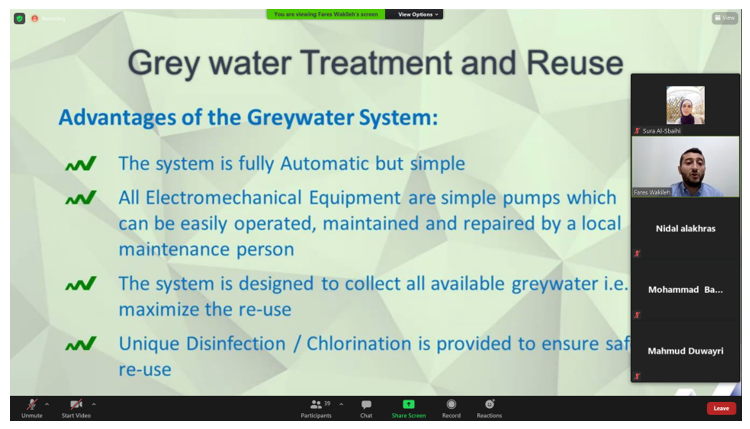
Eng. Ahmed Masoud, a PhD Student in the field of civil and environmental engineering, whose research focus on integrating NBS in sustainable water management under the circular economy:
Using NBS as a decentralized treatment technology for wastewater treatment have the potential to infiltrate the market and can be adopted to further facilitate WDM and NCWR uptake at rural communities
The outcomes of these discussions will be combined in a common Mediterranean policy document, a common regional strategic document that presents the perspective for the adoption in water management planning of WDM and NCWR measures in the Mediterranean region, in alignment with the principles of the circular economy. This was, in fact, the second of four meetings during which key themes shall be discussed.
The conclusions arose during this meeting are here below listed:
